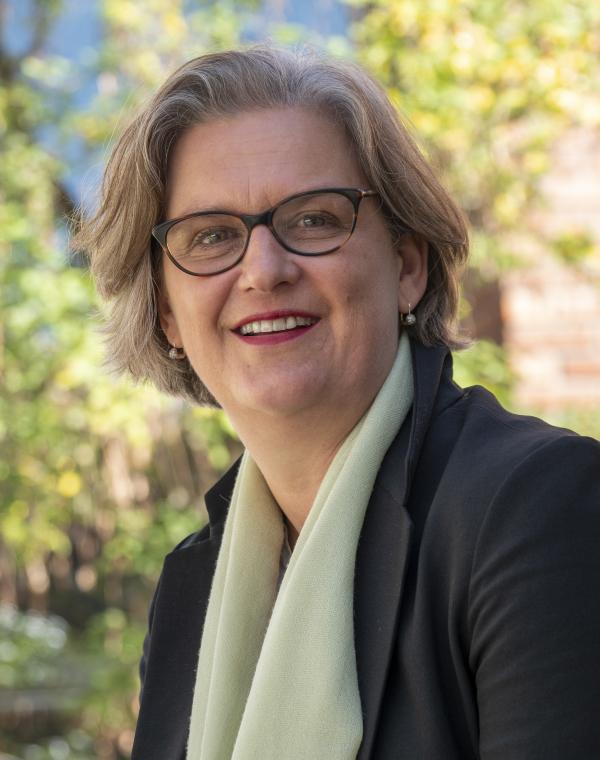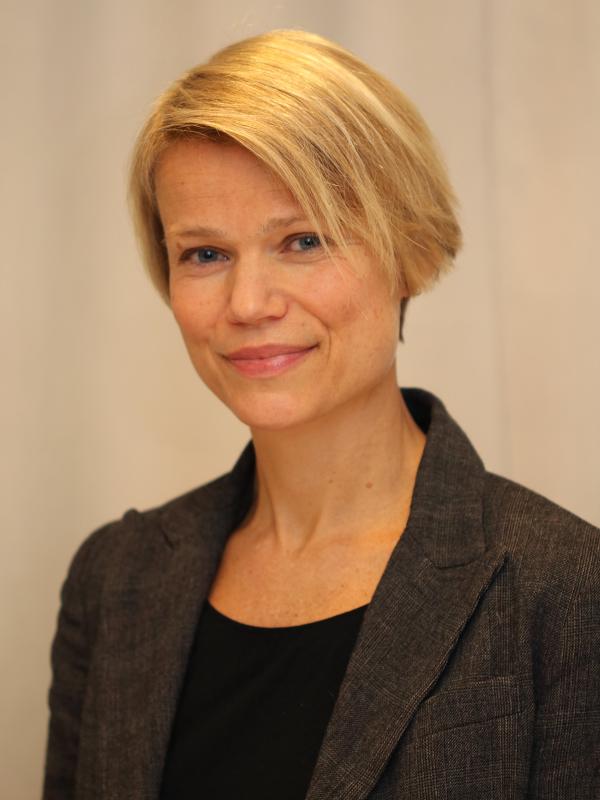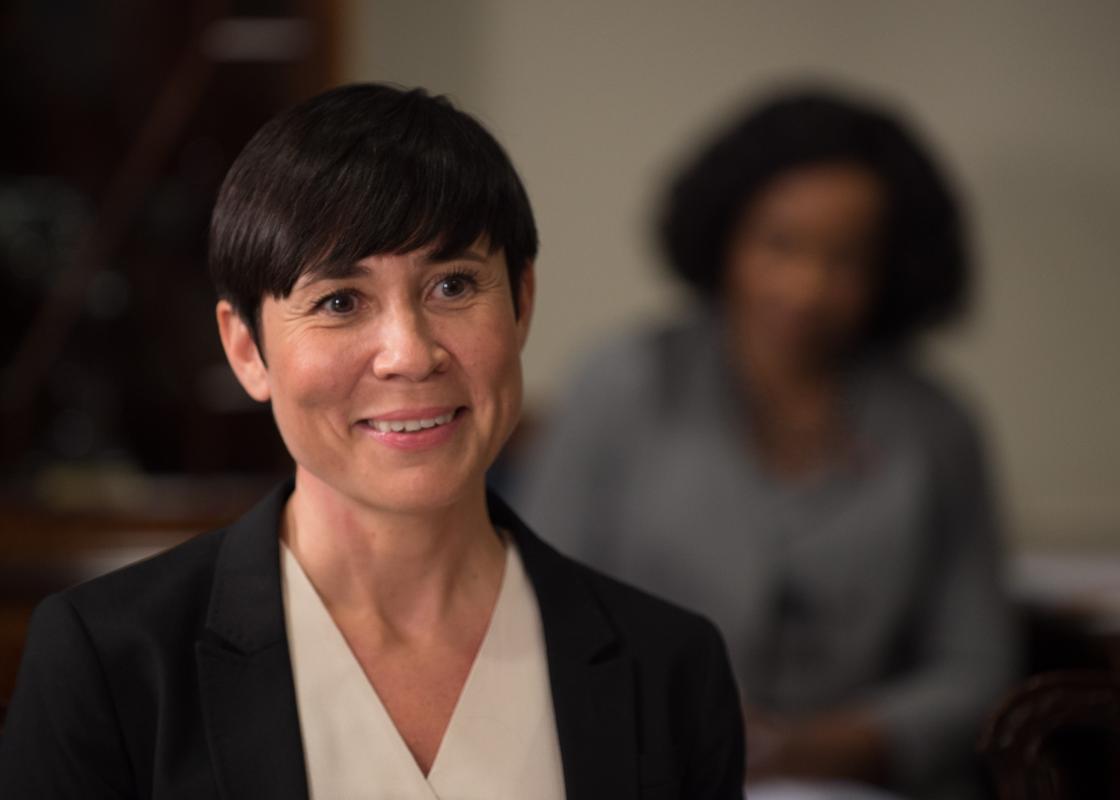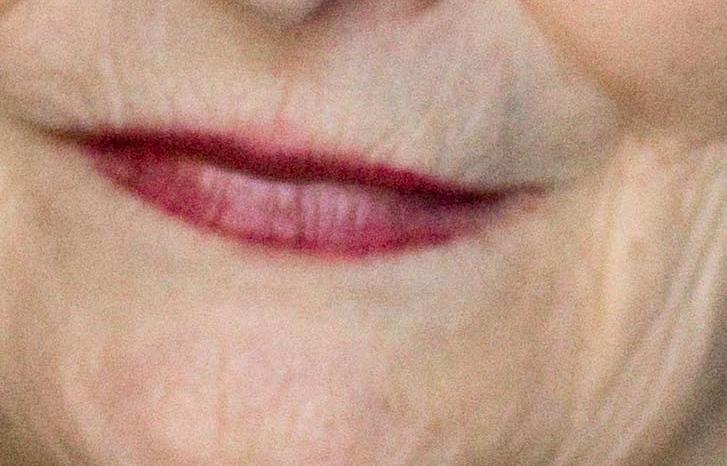When Ine Eriksen Søreide was appointed Minister of Foreign Affairs in 2017, she was the first woman in Norway to hold this position.
"This meant that she was subject to certain expectations, including that she would be a stronger advocate for gender equality in foreign policy than her male predecessors," says Inger Skjelsbæk, a professor at the University of Oslo and the Peace Research Institute Oslo (PRIO).
Together with Eirinn Larsen, Sigrun Marie Moss and Torunn L. Tryggestad, she has written the article "Muted State Feminist?" about Ine Eriksen Søreide's office as Minister of Foreign Affairs from 2017 to 2021.
Consensus in foregin policy
Skjelsbæk says that Søreide adhered to a long pragmatic tradition in Norwegian foreign policy.
"This policy area has been characterized by a large degree of consensus across different governments and different periods of times.”
Some of the consensus is based on the ideal that the state should work actively to promote equality between men and women. This has given rise to the term "state feminism", defined by Helga Hernes in 1987.

"This means that the state is regarded as a partner in a kind of feminist project. This way of thinking about gender equality and feminism is very strong in the Scandinavian countries," says Skjelsbæk.
She emphasises that Søreide also upheld these ideals during her time in office.
"For example, she made it clear that gender equality perspectives had to be included when Norway was a facilitator in peace processes. She was also concerned that boards and delegations abroad should have a balanced representation of women and men.”
International branding competition
However, although Søreide was a feminist in practice, this was not something she flaunted. Shunning the "feminist" label meant she lagged behind in the competition to brand Norway as an international authority in the field of gender equality, Skjelsbæk believes.
Søreide served as foreign minister during a period when other countries adopted a clearer feminist stance, she points out.
"Canada, Germany and Mexico, and Sweden, in particular, are examples of countries that use the term 'feminist' as part of their foreign policy.”
In the case of the Swedes, this meant that feminist objectives were to override all other considerations in foreign policy.
Why didn't Norway do the same?
According to Skjelsbæk, this would have affected Norway's commitment to peace, perhaps the country's most important source of foreign policy capital.
Feminist capital versus neutrality
"Norway is a go-to country for a lot of conflict countries. We haven’t been a colonial power, we have a lot of money and resources, and we are known for being a good, neutral facilitator of peace negotiations," she says.
"By pursuing an uncompromising feminist foreign policy, Norway would have risked losing this neutrality.”
While Sweden has largely succeeded in transforming gender equality into a "valuable asset," Skjelsbæk believes that Norway became less visible in an area in which it actually has substantial political capital.
"Norway is one of the countries driving gender equality in many fields. For example, we are known for our practice of gender quotas on boards, which has become something of an export commodity.”
Co-author and professor of history Eirinn Larsen at the University of Oslo agrees that Norway has benefited from acting as a pioneer in the field of gender equality.
"Playing the gender equality card has made it easier for Norway to enter into dialogue with important and powerful countries," she says.
Historic ambassador for women's rights
Larsen refers to several historical factors that have helped to enhance Norway's reputation as a gender equality nation:
"This is as much a result of how other countries have perceived Norway as how the Norwegian authorities have chosen to present themselves.”
It all began around the dissolution of the union in 1905, when Norway as a young nation-state endeavoured to secure a position at the international negotiating table.

When it comes to women's rights, Larsen points out that the United States was the most progressive country, and was also perceived thus:
"This is where the bourgeois women's movement began, and where the first advances were made with regard to women's suffrage.”
From the late 1860s, several U.S. states introduced suffrage and voting rights for women, according to Larsen.
"However, establishing the right to vote at the federal level was far more difficult.”
In young nations with a desire for independence, the political process was different. Norway introduced limited suffrage for women at the national level in 1907.
"At a time when opponents of women's suffrage were closing ranks in the United States, American suffragettes pointed to Norway as an example to follow.
This was a situation that both the Norwegian women's movement and the Norwegian authorities saw fit to exploit after the dissolution of the union in 1905," says Larsen.
In 1908, for example, the authorities did something astonishing: they appointed Fredrikke Marie Qvam as a Norwegian diplomat ahead of an international meeting on women's suffrage. In the years leading up to 1913, this women's rights activist served as a kind of ambassador for women's suffrage abroad.
Brundtland's "women government"
The 1970s saw a new women's movement that demanded liberation and real equality with men, according to Larsen.
"Women had long had the right to vote. Now it was about representation and the exercise of power.”
In 1986, Gro Harlem Brundtland’s government caused a stir because it had almost as many female ministers as male ministers.
Larsen notes that it nevertheless took a Conservative government under Erna Solberg, some thirty years later, to appoint a woman in the post of foreign minister.
With a female prime minister and foreign minister as well as minister of finance, the second Solberg government became yet another symbol of a progressive Norwegian gender equality policy.
This government also excelled in other ways too, says co-author Inger Skjelsbæk.
"Delegations of purely women's groups were sent to the UN, led by a female ambassador.”
As for Minister of Foreign Affairs Ine Eriksen Søreide, co-author Inger Skjelsbæk speculates that Norway's historical track record in the field of gender equality and the Solberg government's strong female representation were an excuse for doing nothing:
"Did Søreide think that Norway’s achievements spoke for themselves, and that there was therefore no need to brand Norwegian foreign policy as gender equality-oriented?"
The Swedes have traditionally pioneered the export of welfare state and social democratic values to a greater extent than Norway, and are also perceived that way in the world," she says.
"Since Sweden has been so strong in this field, Norway may have been able to sit back a bit. And as I said, I think that has suited Norway and the Norwegian foreign minister just fine," Skjelsbæk said.
A longer version of this article was first published in Norwegian, and was since translated into English.


